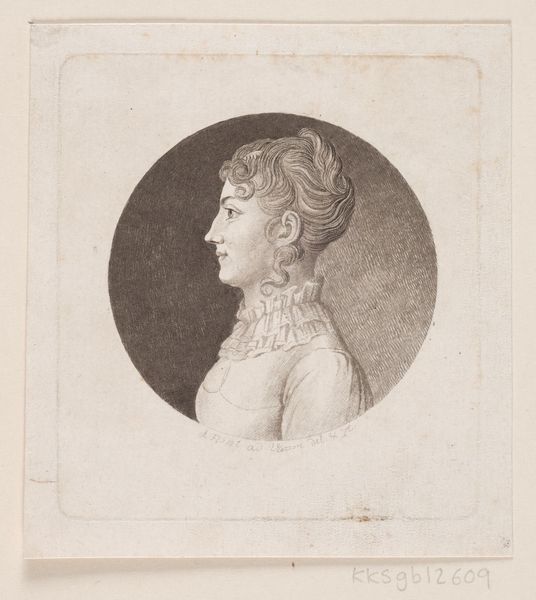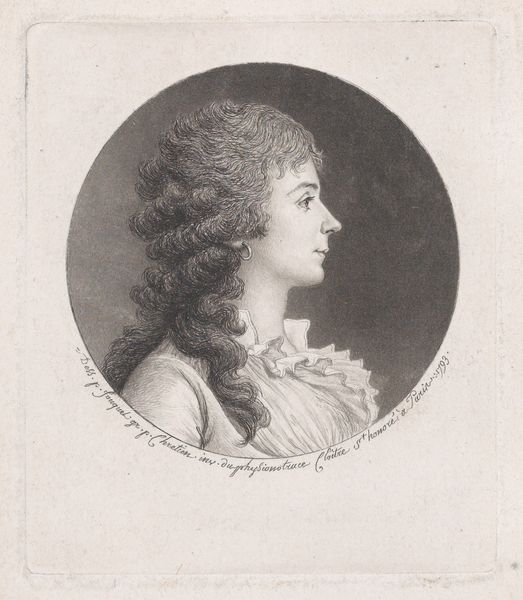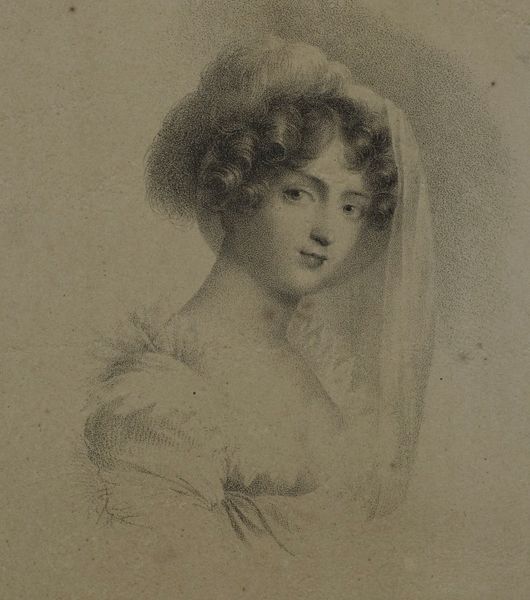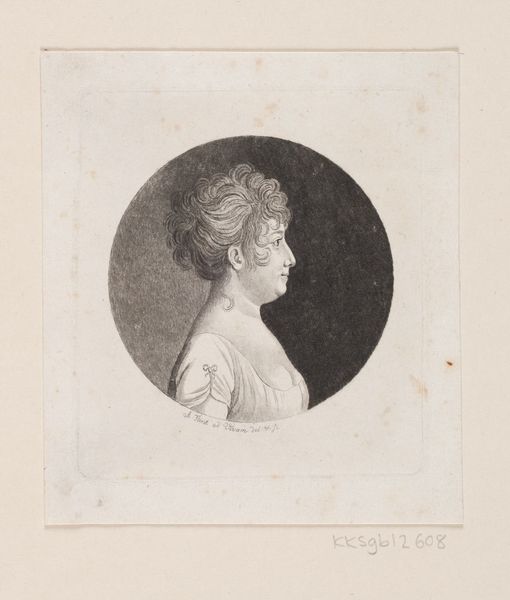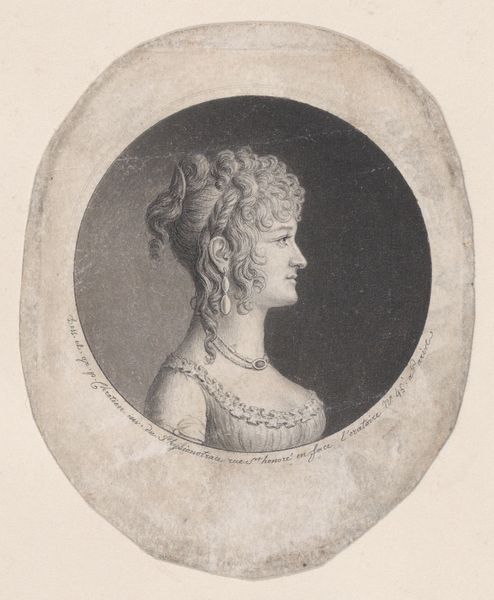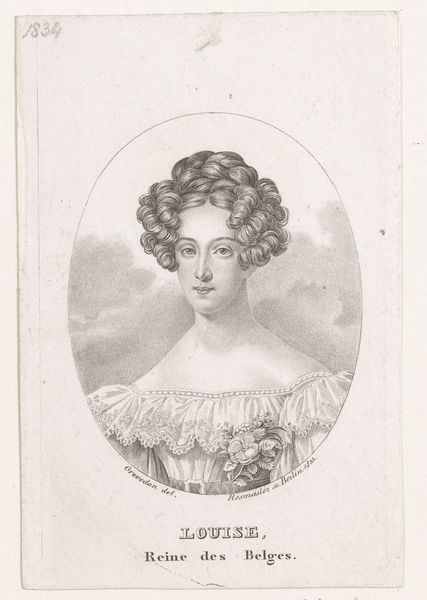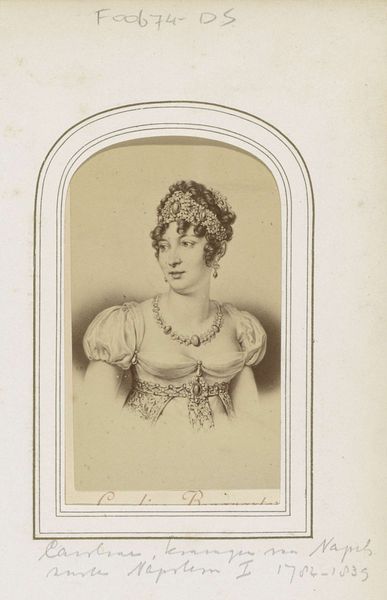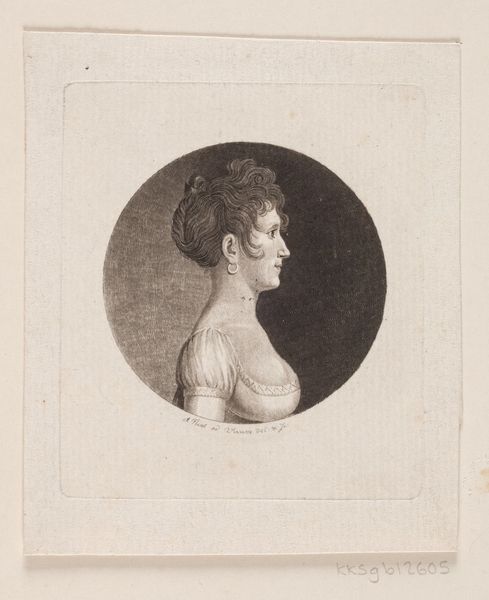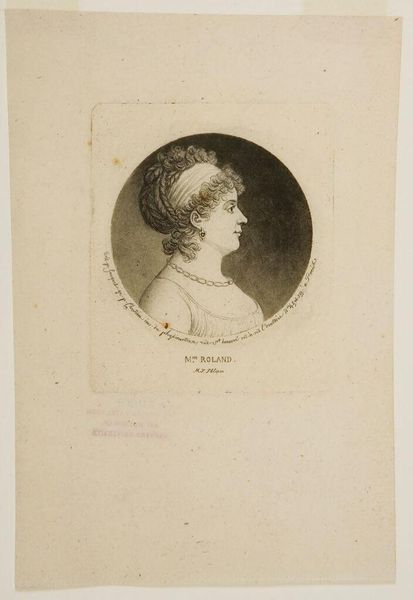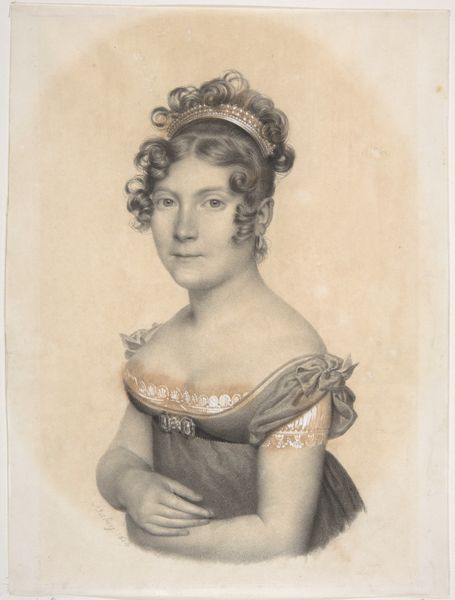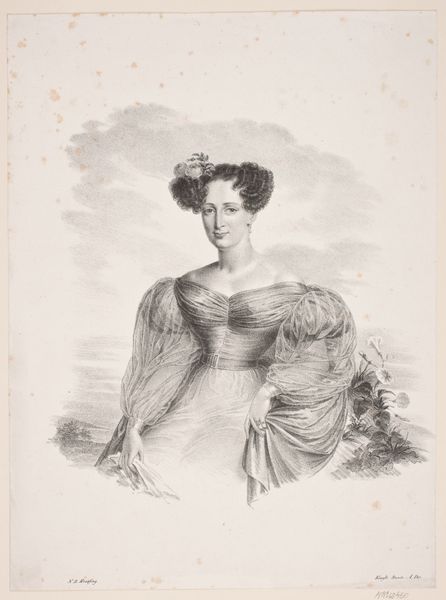
drawing, print, graphite
#
portrait
#
drawing
#
neoclacissism
# print
#
graphite
#
graphite
Dimensions: Plate: 3 3/16 × 2 13/16 in. (8.1 × 7.2 cm) Sheet: 5 1/2 × 4 3/16 in. (13.9 × 10.7 cm)
Copyright: Public Domain
Curator: Gilles Louis Chrétien created this portrait of Madame Récamier between 1786 and 1811. Executed using graphite, it embodies the Neoclassical style. What are your initial thoughts? Editor: There’s something so strikingly austere about this portrait, almost coldly elegant. The contrast between the dark background and the subject’s profile heightens this feeling of aloofness. Curator: The circular composition directs our gaze meticulously around her face. Note the deliberate lines used to craft her delicate features, giving this print a sense of precision and restraint typical of the Neoclassical focus on order and idealized beauty. Editor: This image exists within a complex matrix of socio-political meanings. Madame Récamier was more than a subject; she was a prominent socialite during a period of great upheaval in France. Her salon was a hub of intellectual and political discourse. Doesn't this portrait function, in a way, as a branding exercise, a controlled presentation of identity? Curator: Indeed, it adheres to certain conventions but goes beyond the mere likeness. Focus on the subtle shading; it renders an image which is visually stunning, almost ethereal in its depiction of light and form. Also, the medium, a simple graphite print, underscores the artist’s mastery. Editor: But that very simplicity could be viewed as a social signal. Think about it: portraits were often signs of power and status. By choosing what seems like a 'simple' graphite medium, is Madame Récamier subtly commenting on the excesses of the pre-Revolution aristocracy? The context invites that interpretation. Curator: Intriguing to contemplate the interplay of aesthetics and purpose. However, let's consider how this restraint aligns with the Neoclassical values—clarity, balance, and order elevated over expressive ornamentation. These formal qualities communicate even when historical context remains silent. Editor: It’s hard for me to separate the two; every image has its social life. By focusing solely on its structure, are we potentially missing crucial clues to interpreting its meaning? Curator: Perhaps, but consider the elegance of execution and you find the enduring impact of art—to move, stir feeling, evoke curiosity. Editor: An impact shaped by time and circumstance, no doubt, influencing our perception in ways the artist might not have predicted. Thanks for this illuminating exchange. Curator: The pleasure was all mine, a fascinating blend of lines and times indeed!
Comments
No comments
Be the first to comment and join the conversation on the ultimate creative platform.
